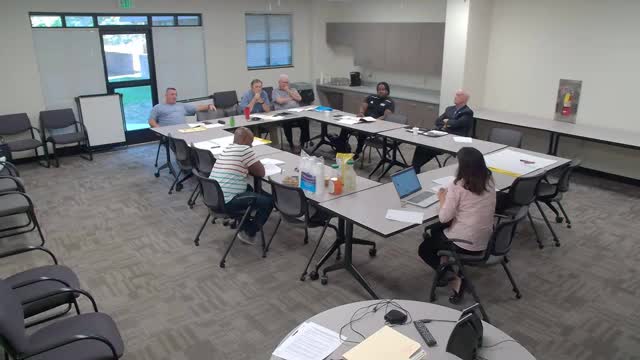County Faces Flooding Crisis Amid Infrastructure Challenges
June 19, 2024 | Scotland County, North Carolina

This article was created by AI summarizing key points discussed. AI makes mistakes, so for full details and context, please refer to the video of the full meeting. Please report any errors so we can fix them. Report an error »

During a recent government meeting, officials discussed pressing issues related to flooding, infrastructure, housing development, and economic growth in the county. The conversation highlighted ongoing concerns about areas prone to flooding, particularly following severe weather events that have exceeded the capacity of existing drainage systems. While some drainage issues have been addressed over the past six years, officials acknowledged that certain locations remain vulnerable to significant flooding, even during storms classified as 100-year events.
The meeting also touched on the importance of collaboration among various local government entities, including the planning and zoning board, county commissioners, and city council representatives. This collaborative approach aims to develop a comprehensive plan to address infrastructure needs and improve stormwater management.
Housing development emerged as another critical topic, with officials exploring potential public-private partnerships to enhance affordable housing options. Current projects include the construction of apartments near the IAJ Community Center, which is seen as a step toward addressing the county's housing shortage. However, the discussion revealed that the county's population growth has stagnated, with only 86 new residents over the past three years, largely due to a lack of job opportunities and suitable housing.
The meeting also examined the impact of solar farms on local agriculture and land use. Officials expressed concerns that the proliferation of solar installations on prime agricultural land could hinder future growth and development. They emphasized the need for strategic planning to balance renewable energy initiatives with the preservation of valuable agricultural resources.
Additionally, the county's tax structure was scrutinized, particularly the challenges posed by a significant portion of non-taxable land, including wildlife and military areas. This situation has led to higher tax burdens on remaining property owners, complicating efforts to attract new residents and businesses.
Overall, the meeting underscored the interconnectedness of infrastructure, housing, and economic development, with officials recognizing the need for a coordinated strategy to foster growth and improve the quality of life for residents.
The meeting also touched on the importance of collaboration among various local government entities, including the planning and zoning board, county commissioners, and city council representatives. This collaborative approach aims to develop a comprehensive plan to address infrastructure needs and improve stormwater management.
Housing development emerged as another critical topic, with officials exploring potential public-private partnerships to enhance affordable housing options. Current projects include the construction of apartments near the IAJ Community Center, which is seen as a step toward addressing the county's housing shortage. However, the discussion revealed that the county's population growth has stagnated, with only 86 new residents over the past three years, largely due to a lack of job opportunities and suitable housing.
The meeting also examined the impact of solar farms on local agriculture and land use. Officials expressed concerns that the proliferation of solar installations on prime agricultural land could hinder future growth and development. They emphasized the need for strategic planning to balance renewable energy initiatives with the preservation of valuable agricultural resources.
Additionally, the county's tax structure was scrutinized, particularly the challenges posed by a significant portion of non-taxable land, including wildlife and military areas. This situation has led to higher tax burdens on remaining property owners, complicating efforts to attract new residents and businesses.
Overall, the meeting underscored the interconnectedness of infrastructure, housing, and economic development, with officials recognizing the need for a coordinated strategy to foster growth and improve the quality of life for residents.
View full meeting
This article is based on a recent meeting—watch the full video and explore the complete transcript for deeper insights into the discussion.
View full meeting
